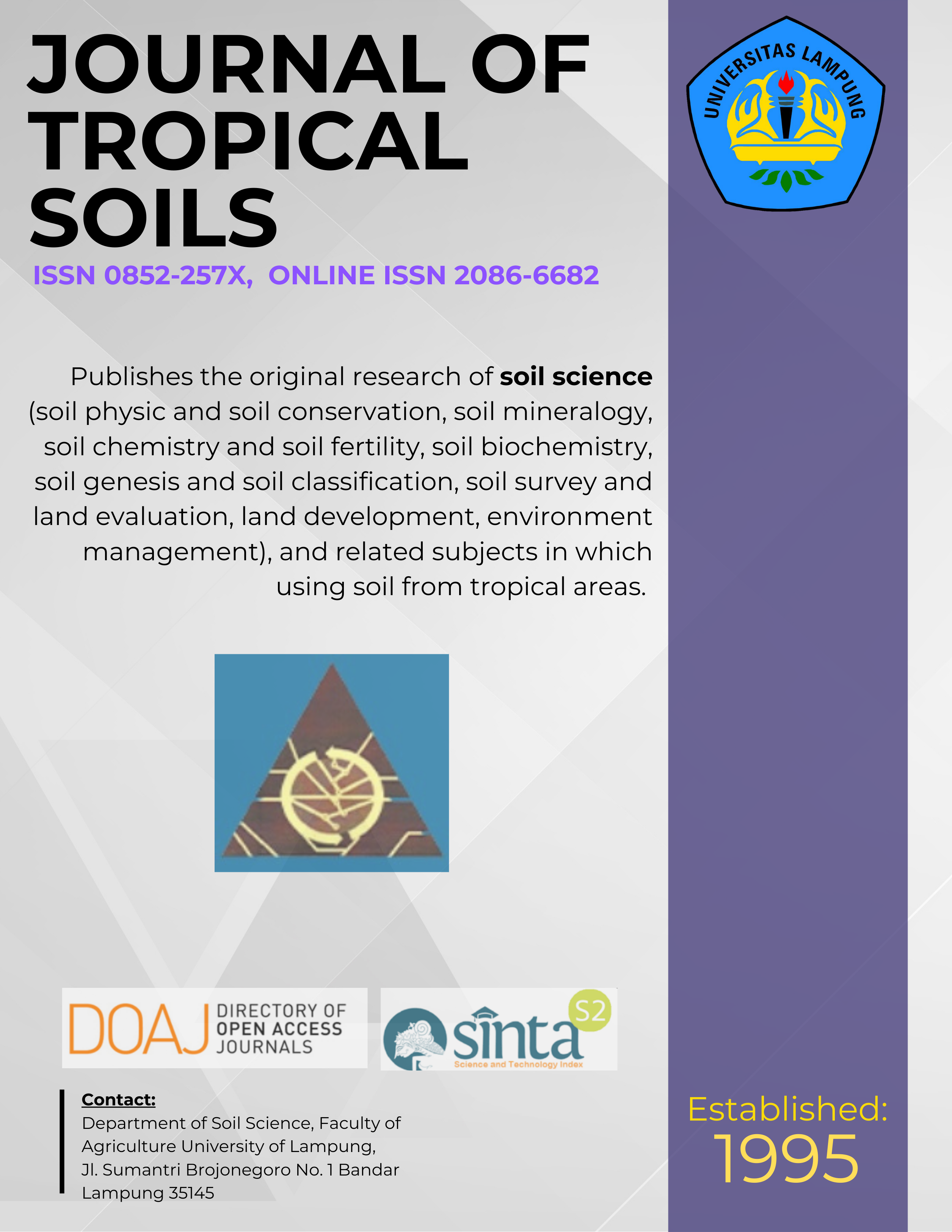Improvement of Soil Chemical Properties of Typic Hapludult After Application of Organic and Inorganic Fertilizers
Main Article Content
Abstract
Tuberose (Polyanthes tuberosa L.) is a potential flowering plant that will be developed in Jatinangor, West Java, Indonesia. However, the characteristics of Typic Hapludult soil in Jatinangor , i.e. clay texture, acidic pH, and high amount of total-P but low in available-P cause the tuberose difficult to grow optimally. The aim of this study was to obtain the potential ratio of organic and inorganic fertilizer dosages for tuberose grown on Typic Hapludult. The combinations of organic and inorganic fertilizers with different ratios (0/0; 0/1; 1/0; 0.5/0.5; 0.5/1; 1/0.5; 1/1.5; 1.5/0; 1.5/0.5, and 1.5/) were applied. The application of the combination of organic and inorganic fertilizers showed positive effects on soil pH, available-P, total-P, and fresh weight of tuberose grown on Typic Hapludult. The application of 50% organic fertilizer + 50% inorganic fertilizer was an effective combination that was able to increase the fresh weight of tuberose up to 9240 g plant-1 or increasing the fresh weight by 39% in comparison to that in the control treatment (without fertilizer application).
Â
Downloads
Article Details
Section
License for Authors
Authors who publish with this journal agree to the following terms:
- Authors retain copyright and grant the journal right of first publication with the work simultaneously licensed under a Creative Commons Attribution License that allows others to share the work with an acknowledgement of the work's authorship and initial publication in this journal.
- Authors are able to enter into separate, additional contractual arrangements for the non-exclusive distribution of the journal's published version of the work (e.g., post it to an institutional repository or publish it in a book), with an acknowledgement of its initial publication in this journal.
- Authors are permitted and encouraged to post their work online (e.g., in institutional repositories or on their website) prior to and during the submission process, as it can lead to productive exchanges, as well as earlier and greater citation of published work (See The Effect of Open Access).
License for Regular Users
Other regular users who want to cite, distribute, remix, tweak, and build upon author’s works, even for commercial purposes, should acknowledge the work’s authorship and initial publication in this journal, licensed under a Creative Commons Attribution License.

